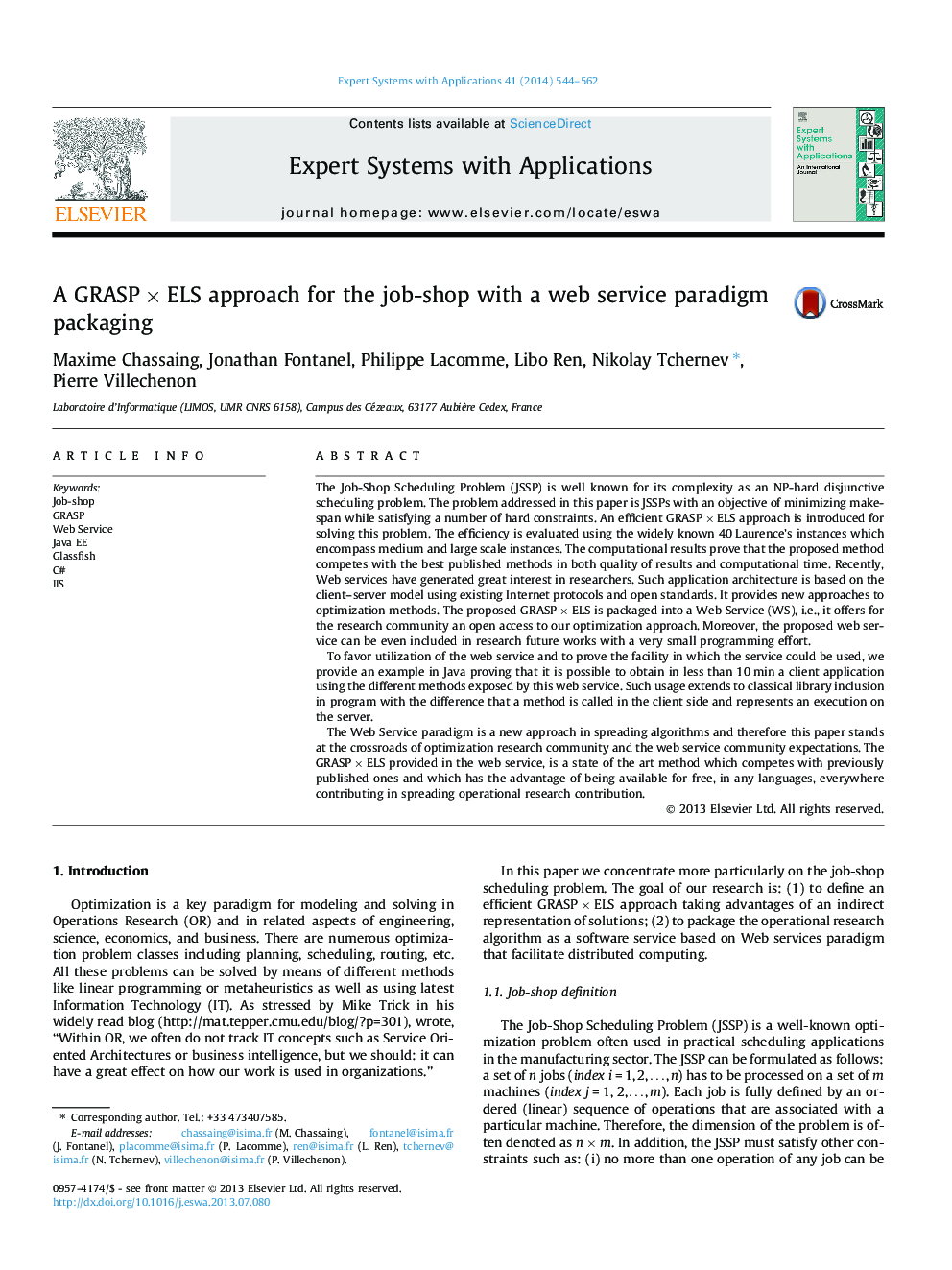| Article ID | Journal | Published Year | Pages | File Type |
|---|---|---|---|---|
| 382565 | Expert Systems with Applications | 2014 | 19 Pages |
•We present an original GRASP × ELS approach for job-shop solving.•Indirect representation of solution permits to better investigate the search space.•The GRASP × ELS is evaluated with 11 previously published methods.•Results prove that the method is state of the art.•GRASP × ELS is packaged into a web service.
The Job-Shop Scheduling Problem (JSSP) is well known for its complexity as an NP-hard disjunctive scheduling problem. The problem addressed in this paper is JSSPs with an objective of minimizing makespan while satisfying a number of hard constraints. An efficient GRASP × ELS approach is introduced for solving this problem. The efficiency is evaluated using the widely known 40 Laurence’s instances which encompass medium and large scale instances. The computational results prove that the proposed method competes with the best published methods in both quality of results and computational time. Recently, Web services have generated great interest in researchers. Such application architecture is based on the client–server model using existing Internet protocols and open standards. It provides new approaches to optimization methods. The proposed GRASP × ELS is packaged into a Web Service (WS), i.e., it offers for the research community an open access to our optimization approach. Moreover, the proposed web service can be even included in research future works with a very small programming effort.To favor utilization of the web service and to prove the facility in which the service could be used, we provide an example in Java proving that it is possible to obtain in less than 10 min a client application using the different methods exposed by this web service. Such usage extends to classical library inclusion in program with the difference that a method is called in the client side and represents an execution on the server.The Web Service paradigm is a new approach in spreading algorithms and therefore this paper stands at the crossroads of optimization research community and the web service community expectations. The GRASP × ELS provided in the web service, is a state of the art method which competes with previously published ones and which has the advantage of being available for free, in any languages, everywhere contributing in spreading operational research contribution.
